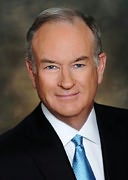- Shopping Bag ( 0 items )
From Barnes & Noble
Cable show superstar Bill O'Reilly and historian Martin Dugard already have written a bestselling history of the political murder of Abraham Lincoln; now they aim their sights on the other most famous presidential assassination in American history. The 1963 killing of John F. Kennedy in the autumn of his first term startled the world, but also spawned a plethora of conspiracy theories. Killing Kennedy explores the Cold War atmosphere of the times and probes the depth of hatred focused on JFK by the CIA, organized crime, and foreign leaders. Sensational; guaranteed to re-stir controversy.






Overview
A riveting historical narrative of the shocking events surrounding the assassination of John F. Kennedy, and the follow-up to mega-bestselling author Bill O'Reilly's Killing Lincoln
More than a million readers have thrilled to Bill O'Reilly's Killing Lincoln, the page-turning work of nonfiction about the shocking assassination that changed the course of American history. Now the anchor of The O'Reilly Factor recounts in gripping detail the brutal murder of John Fitzgerald ...